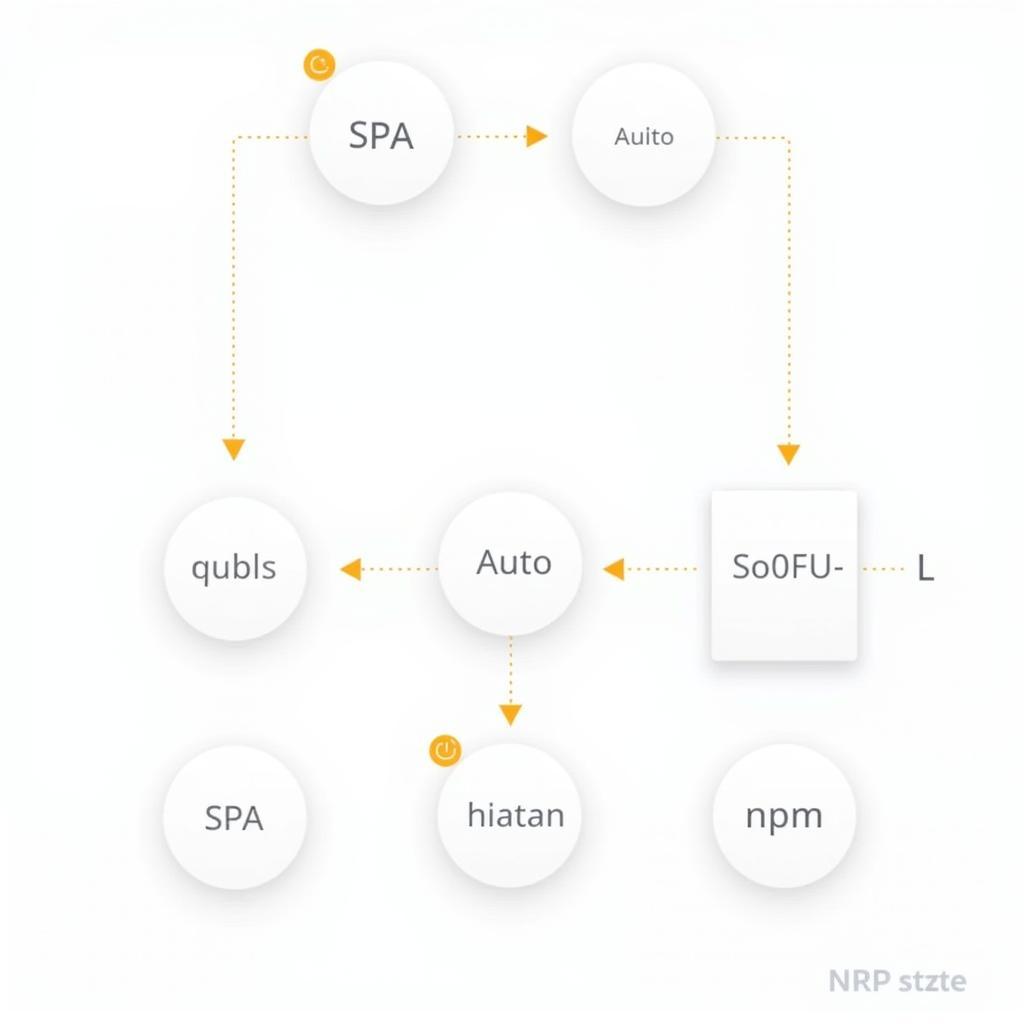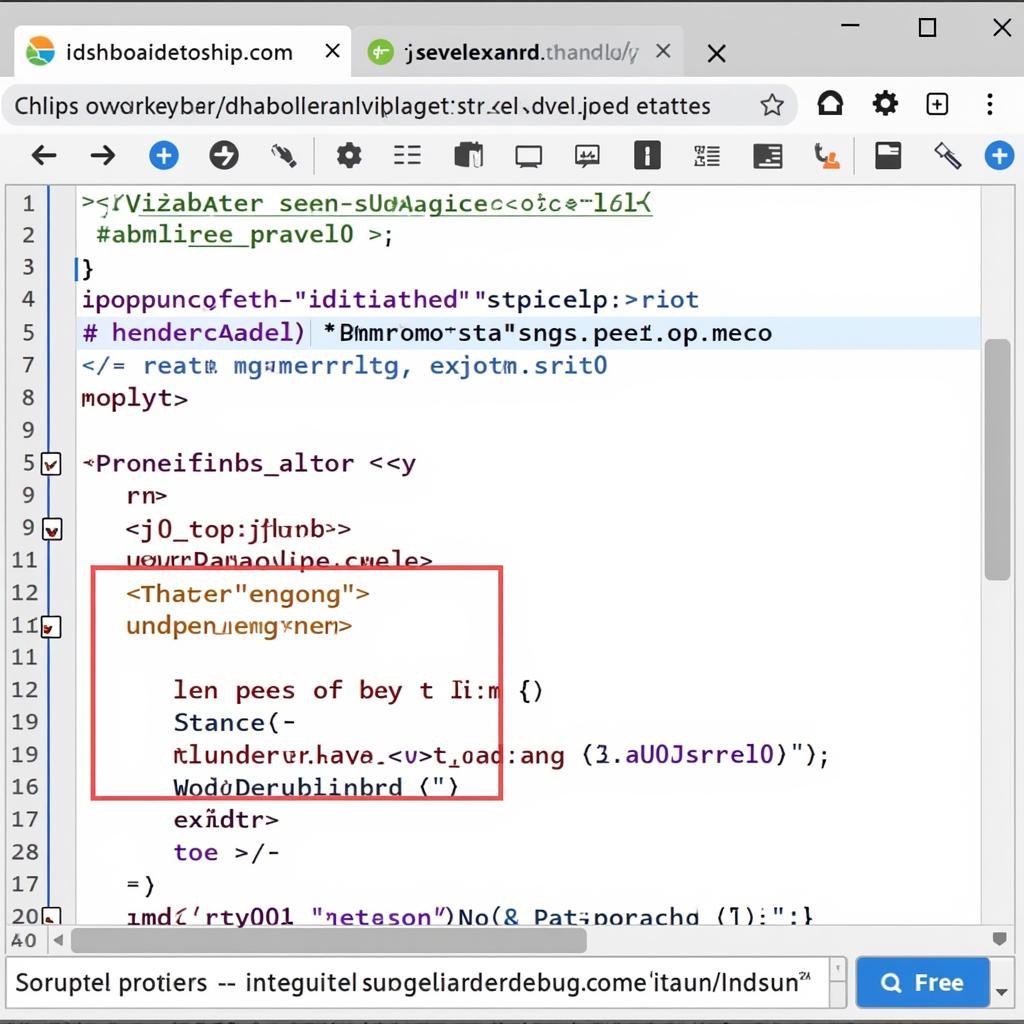Implementing robust authentication and authorization for your Single Page Application (SPA) is crucial in today’s digital landscape. Using Auth0 with npm provides a streamlined and secure way to manage user identities and access control, allowing you to focus on building exceptional user experiences. This article will guide you through integrating Auth0 into your SPA project using npm, exploring the benefits and providing practical examples.
Let’s dive into how you can enhance your SPA’s security using Auth0 and npm. See how easy it is to integrate this powerful authentication solution into your application. Check out our resources on angular 4+ spa with web api.
Why Auth0 for Your SPA?
Single Page Applications, known for their dynamic and responsive nature, present unique security challenges. Traditional server-side authentication methods often fall short in the SPA environment. Auth0 addresses these challenges by providing a cloud-based identity platform that seamlessly integrates with client-side technologies. It offers several advantages:
- Simplified User Management: Auth0 handles user registration, login, and password management, freeing you from building and maintaining complex authentication infrastructure.
- Enhanced Security: Auth0 implements industry-best security practices, including multi-factor authentication, brute-force protection, and anomaly detection.
- Social Login Integration: Allow users to authenticate with their existing social media accounts, simplifying the registration process and improving user experience.
- Customization and Flexibility: Tailor the authentication flow to match your application’s branding and specific requirements.
Implementing Auth0 with npm
Integrating Auth0 into your SPA project is surprisingly simple, thanks to npm and the Auth0 SPA SDK. Here’s a step-by-step guide:
-
Install the Auth0 SPA SDK: Use npm to install the necessary packages. Open your terminal and navigate to your project directory, then run:
npm install @auth0/auth0-spa-js -
Configure Auth0: Create an application in your Auth0 dashboard. Obtain your domain, client ID, and audience values, which you’ll need for the next step.
-
Initialize the Auth0 Client: Create an instance of the
Auth0Clientin your application, providing the necessary configuration values obtained in the previous step. -
Implement Authentication Flows: Use the
loginWithRedirect,loginWithPopup, andlogoutmethods provided by the SDK to handle user authentication and logout. -
Secure API Calls: Use an access token obtained from Auth0 to secure API calls. This ensures that only authenticated users can access protected resources.
 Auth0 SPA npm integration diagram
Auth0 SPA npm integration diagram
Best Practices for Auth0 SPA Integration
While the basic integration is straightforward, following these best practices can enhance security and user experience:
-
Token Management: Implement secure token storage and refresh mechanisms to ensure that user sessions remain valid and secure.
-
Input Validation: Validate all user inputs on the client-side to prevent common security vulnerabilities such as cross-site scripting (XSS).
-
Error Handling: Implement robust error handling to provide informative messages to users and prevent application crashes.
-
Regular Security Audits: Conduct regular security audits to identify and address potential vulnerabilities. Keep your Auth0 SDK and dependencies updated to benefit from the latest security patches.
You might find our resource on Auth0 auth0-spa-js helpful for further details.
Troubleshooting Common Auth0 SPA Issues
Occasionally, you might encounter issues during the integration process. Here are some common problems and solutions:
-
Callback URL Mismatch: Ensure that the callback URL configured in your Auth0 application matches the redirect URI used in your SPA.
-
CORS Errors: Configure your server to allow requests from your SPA’s origin to avoid Cross-Origin Resource Sharing (CORS) errors.
-
Token Expiration: Implement proper token refresh mechanisms to handle expired access tokens and maintain seamless user sessions.
 Troubleshooting Auth0 SPA integration issues.
Troubleshooting Auth0 SPA integration issues.
John Smith, a Senior Security Consultant at CyberSafe Solutions, emphasizes, “Integrating a robust authentication solution like Auth0 early in the development process is essential for securing your SPA and protecting user data.”
Conclusion
Securing your SPA with Auth0 through npm is a crucial step in protecting user data and ensuring a secure user experience. By following the steps outlined in this article and implementing best practices, you can effectively integrate Auth0 into your SPA and leverage its powerful authentication and authorization capabilities. This allows you to focus on building a great user experience, knowing that your application’s security is in good hands. Remember to explore our guide on authenticating your angular spa with asp.net web api and auth0.
 A secured SPA using Auth0 and npm.
A secured SPA using Auth0 and npm.
Jane Doe, a lead developer at WebDev Pro, adds, “Auth0’s ease of integration with npm makes it a go-to solution for securing our SPA projects. The comprehensive documentation and support are invaluable.”
FAQ
- What is Auth0?
- How does Auth0 work with SPAs?
- What are the benefits of using Auth0 with npm?
- How do I install the Auth0 SPA SDK?
- How do I configure Auth0 for my SPA?
- How can I troubleshoot common Auth0 SPA issues?
- Where can I find more information on Auth0 and SPA security?
Need assistance? Contact us at Phone Number: 0373298888, Email: [email protected], or visit us at 86 Cau Giay, Hanoi. We have a 24/7 customer support team ready to help.